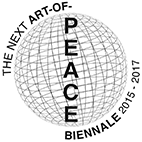The School of Human Activity
I founded The School of Human Activity when developing a workshop for the School of Performance at The Days of Performance Art, Dzyga Art Association, L’viv, Ukraine, 5-7 September, 2013. The School is a temporary, non-institutional gathering of diverse participants exploring relationships between (performance) art, pedagogy and everyday life. Over three days in L’viv we explored relationships between (performance) art and human activity as cultural, political and social practice. The work of the School contributes towards Robert Filliou’s conceptualization of the ‘Art-of-Peace’ (Filliou 1970), as ‘work by artists that deals with the specific problem of making the world a world with peace and harmony.’ (Thompson 2011). This led to the 1985 exhibition ‘Towards an Art-of-Peace Biennale’, a project resumed now as series of collaborative offline/online events entitled ‘The Next Art-of-Peace Biennale 2015-17’. (www.peacebiennale.info). Filliou, author of ‘Teaching and Learning as Performing Arts’ (Filliou 1970b) was also co-creator of the ‘Non-École de Villefranche’ whose motto ‘carefree exchange of information and experience / no student, no teacher / perfect license, at times to talk, at times to listen” (Filliou 1970b) is of central inspiration to this project. The visual identity of the School, disseminated through its stamp, posters and postcard created in an edition of 100, borrowed heavily in its graphic presentation from both Filliou’s stamp establishing the conceptual, ambulant, itinerant institution of the ‘La Galerie légitime’ and the letterhead for the ‘Non-École de Villefranche’.

Notes on The School of Human Activity in L’viv, Ukraine, 4-8 September 2013
Or
What I Think About (Performance) Art Today (Different Yesterday, Different Tomorrow)
(Performance) Art is one of many languages or practices of human activity. It is not more ‘real’ or ‘authentic’ than any other language or practice. Moreover, it is a material practice. It begins in the material world and remains there / here, often within the specialised discourse and context of (performance) art institutions (including academies, exhibitions, festivals, etc). As it is, then, a very framed and mediated activity (not universal, transcendental or ‘pure’)– artists can usefully draw on existing languages and practices in the material world to re-frame, re-situate, juxtapose and question what is already common, what is already observed and yet not understood fully. The (performance) artist has responsibility to be an agent of synthesis, drawing on these already existing threads of discourse, material and behaviours.
The (performance) artist is no different from any other person then except for their responsibility to act usefully in the public sphere. The (performance) artists’ job is to be of ‘service’ to others, to paraphrase Boris Nieslony. We are all already in the material world, already products of the history of material culture. So, there is no need to state the ‘meaning’ of an activity or performance. It exists in relation already. Be an agent of synthesis not an agent of re-iteration. It may lack an immediately apparent utilitarian function, but this is useful. This is the function of the spectator who will, as Marcel Duchamp suggested, judge. The spectator is also already a product of language themselves – they – as we – are always and already constructing theirs and others subjectivities through an ongoing process of translation and interpretation (physical, sensory, mental, etc). The (performance) artist needs to remember that spectators already understand. It is more common for the (performance) artist to say ‘I don’t know what I am doing’.
Warsaw,
08 September 2013
Evaluation:
– The School of Human Activity was an attempt to subvert the usual format of a performance art workshop and transform it into a three-day ‘school’ which would aim to bring together Filliou’s complementary thinking for the ‘Non-école de Villefranche’ and the ‘Art-of-Peace’ Biennale. It was also an attempt to adopt a workshop as a form of ‘biennale’ where the ‘work’ was produced temporally, collaboratively and in response to the immediate context.
– My aspiration to subvert the notion of Masterclass to achieve ‘carefree exchange of information and experience / no student, no teacher’ was unrealistic. Being the most experienced performance artist in the group, coming from the West and being a white male was always going to be difficult to overcome in terms of socially, culturally and pedagogically prescribed relationships. Still, the workshop did provide a context for the free exchange of ideas and development of new actions.
– Although the School of Human Activity happened before the timeframe of The Next Art-of-Peace Biennale, I did want to carry out another edition at the Paradox Fine Art Conference, Poznan in 2015 but withdrew the proposal due to time and material constraints. The influence of The School of Human Activity on the research will be seen from the workshop, event-based aspect of the final 2018 research exhibition.








